Welcome, Cherished Reader, to Pick, Mull, Play!
With Magic Origins officially arriving Friday, now seems like an excellent time to explore the Limited format. I’ll be going through some interesting and key decisions while navigating my way through a draft.
I’ll cover some draft picks, mulligan decisions, plays, and whatever else strikes my fancy. Magic Origins was just released, and I’m not going in an expert, so if you’re reading this in the future with your practice and experience, feel free to laugh at my foolish starting assumptions. Picks might not be from exactly reality, they may be slightly biased to select interesting ones.
How To Misplay The Right Way
I feel many players approach the idea of making the “Right Play” in an unhelpful manner. Believing there is always a correct play in any given situation is a limitation. I think framing it this way is stifling your ability to find good lines, realizing that unconventional and non-optimal plays also have merit, and does not open up further discussion. There is not usually a clear-cut play in a game, no guaranteed optimal mulligan, and no right pick for everyone. There are many factors that can throw a wrench in the best-laid plans, or incorrect biases and assumptions, or hidden information.
When you talk about the “Right Play” you’re trying to find a good play, a better play than you have, or the best play you can possibly find given the time and information you have.
Sometimes a play is clearly the best possible in a relatively simple situation, sometimes it very much isn’t… especially when deciding mulligans, making draft picks, and during complex board states where your opponent has a grip full of cards. A bad play can get rewarded and a good play can get punished.
Magic is complicated. You’ll make many mistakes just trying to minimize the amount of glaringly obvious ones you make.
Mostly, good Magic comes from having a reason for why you do things and then being able to re-evaluate and discuss your thoughts. I’ll be wrong sometimes, but hopefully you’ll understand why I was wrong, and why you think you have a better line of play if I explain my reasoning.
Disclaimer: Scenarios, packs, and opening hands may have been modified, amplified, or fabricated entirely to make them more interesting.
To get the most value from this article, think through each situation carefully and lock in your answer before comparing them with mine.
Pick
You (or a hybrid of you with my voice in your head) sit down to our first Magic Origins draft excited to crack some new cards. We’ve looked over the spoiler but figured diving into the format face-first would be the best option to learn things. We open our first pack and see…
Pack One, Pick One
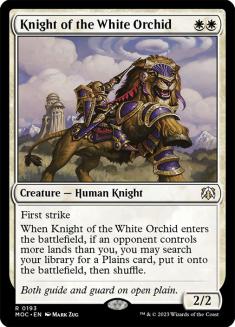
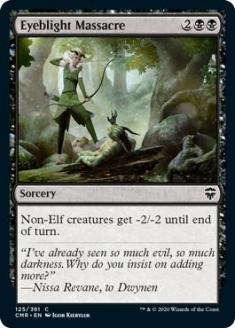
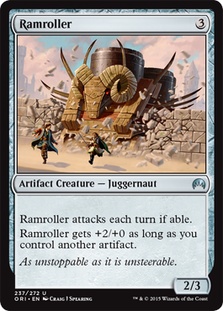
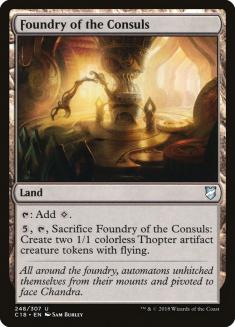
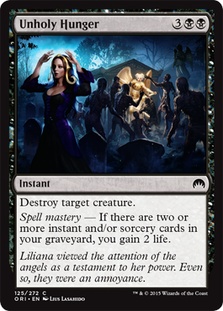
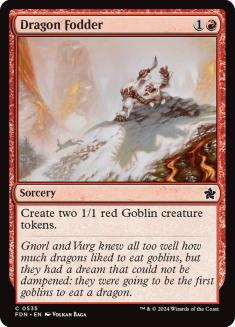
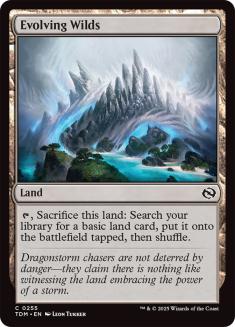
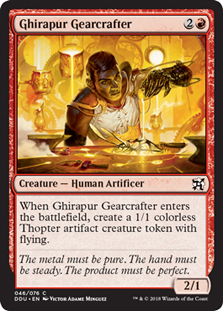
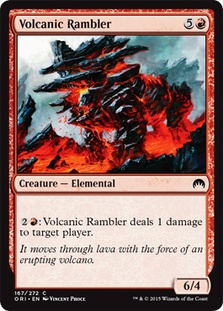
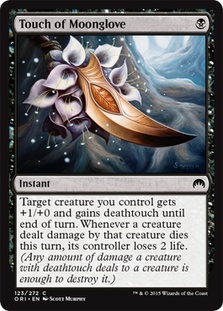
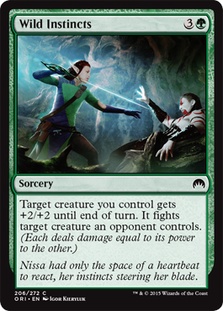
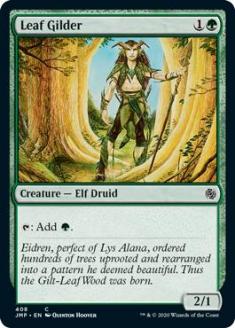
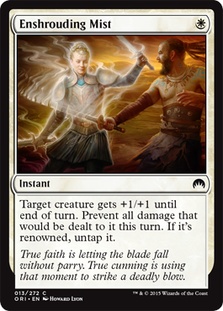
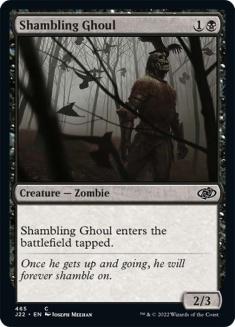
6th – Eyeblight Massacre
Creatures starting stats are small in general thanks to Prowess, Renown and Thopters. Eyeblight Massacre seems great in some matchups, or just in a G/B Elves deck, but is too expensive and situational to be amazing.
5th – Ramroller
An excellent rate if you have another artifact, and colorless to keep your options open. There aren’t actually all that many great artifacts in this set though, so it really only fits in a Thopter deck.
4th – Knight of the White Orchid
Situational ramp is basically just a bonus and you should mostly evaluate the card as 2/2 First Striker for WW which is good but not great.
3rd – Wild Instincts
Classic green fight-based removal, as we typically see nowadays. I wonder how many variations of common Fight cards we’ll see in the coming years. It seems very close between this and Leaf Gilder.
2nd – Leaf Gilder
Solid ramp with a bear attached and fairly irreplaceable in a green deck.
1st – Unholy Hunger
My pick.
Unconditional instant-speed removal with a little lifegain attached. Five mana isn’t a great rate, but it’s always a solid choice because there isn’t much good removal and it’s always going to be picked up fast.
Pack One, Pick Two
We continue onward in the same draft, assuming we took the Unholy Hunger pick one whether you think I was right or not. We get passed this pack:
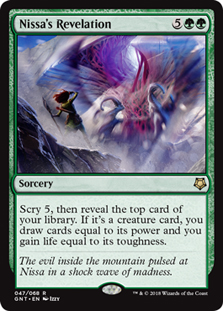
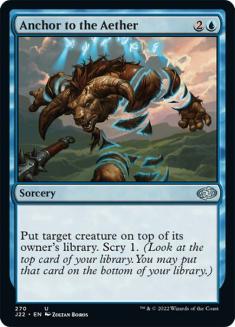
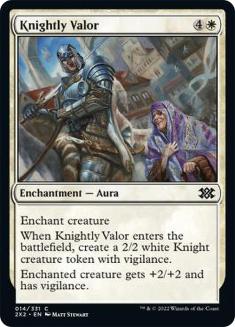
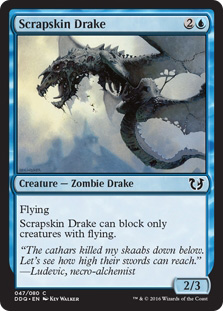
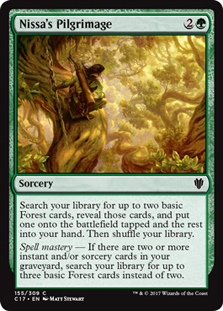
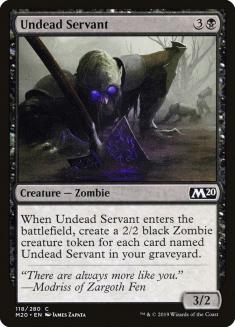
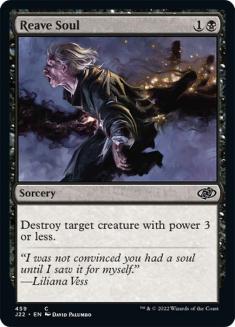
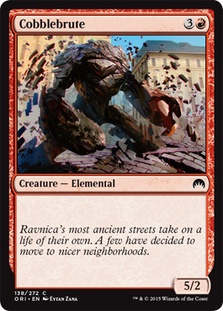
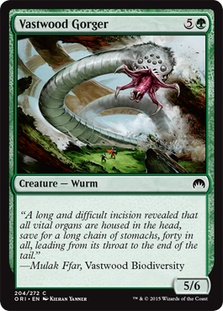
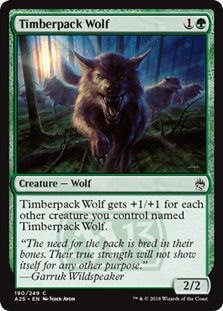
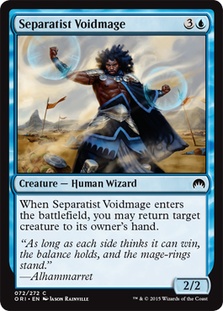
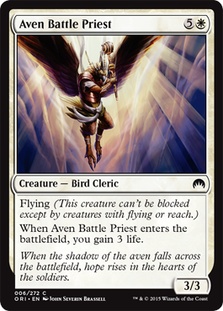
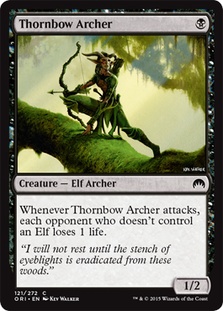
4th – Nissa’s Revelation
My pick.
This is what I picked, but it was an “I immediately regret this decision” moment.
Just because it’s a Revelation doesn’t mean it’s Sphinx’s.
Prowess and Renown are not exactly synergistic with it. There are a few big green fatties, like Vastwood Gorger, but the format feels too fast and low to ground for Nissa to wait seven turns before having her grand revelation.
The card isn’t bad though. You get scry value no matter what. Worst case scenario, six lands on top, you weren’t winning that game before bottoming five lands anyways. Even in medium situations, where you see, let’s say, a 2/2, a removal spell, and three lands, you kind of virtually drew five (of which only two were good) which still isn’t bad.
Evaluating this in Limited makes me feel it has a shot in Constructed. It seems reasonable in G/R Ramp decks with Dragonlord Atarka. Draw eight, gain eight is nice. It’s probably still not necessary, since getting to that point usually means a win anyways. My inner Timmy just wants to be set free.
3rd – Anchor to the Aether
I love bounce-into-the-library spells. Oust, Jeskai Charm, and Azorius Charm all do it for me (and this probably also helps fuel my hate for Domri Rade). Anchor is potential virtual card advantage, and bounce seems great in this format.
2nd – Knightly Valor
This is a very hard tempo swing and great with pushing through Renown or on fliers. Just be careful, the standard disclaimers for playing Auras apply.
1st – Reave Soul
Conditional removal that is really good in this format. Everything is small, it’s two mana, and it’s on-color with my first pick. It’s what we should’ve taken.
So we ended up taking the Nissa’s Revelation. During the rest of the draft it becomes clear that green is open and black dries up completely. This is the deck we end up with:
Creatures (17)
- 1 Llanowar Empath
- 1 Leaf Gilder
- 2 Elvish Visionary
- 1 Vastwood Gorger
- 1 Orchard Spirit
- 1 Yeva's Forcemage
- 2 Timberpack Wolf
- 1 Hitchclaw Recluse
- 3 Rhox Maulers
- 1 Citadel Castellan
- 1 Anointer of Champions
- 1 Stalwart Aven
- 1 Undercity Troll
Lands (17)
Spells (6)

Mull
Let’s go over some mulligan decisions.
Remember to pause, think, and allow yourself to make the correct decision. Taking a beat to pause before every mulligan decisions is a great idea. All too often, I find myself keeping hands I shouldn’t be because I don’t think for even one second.
1. We’re on the play, using the new scry rule (any player that mulligans gets to scry 1 at the start of the game), and see this hand:




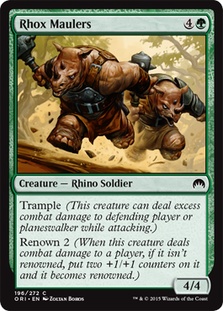


Mulligan.
Too often you’ll just not draw any early action and die.
I think Rhox Maulers is great card, but probably going to be way too slow if it’s your first play. Our deck also has plenty of dead draws – things that aren’t lands but still don’t advance our board development before turn five, like Mighty Leap or Nissa’s Revelation. Redundancy in our five-drops is also not something we’re looking for.
I think this is a clear mulligan, but it’s still not a terrible hand since it can win games where our opponents don’t come out the gate blazing.
2. We mulligan the first hand and see this:



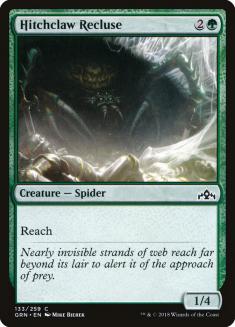


We decide to keep, and for our scry we see Plains on the top of our library. Do we keep it?
Bottom.
This is a situation that is going to come up a lot if the new scry rule is permanently implemented.
Do we keep the land that we want to draw eventually and risk flooding, or bottom it and risk never seeing it? In this case we don’t even mind drawing two lands, and I’m still advocating bottoming the land.
I goldfished this hand quite a few times and was (predictably) sometimes punished and sometimes rewarded for bottoming the Plains. It seemed like I was better off bottoming the land overall though. You have three draw steps to hit a land for Wild Instincts, and even if you don’t hit that means you drew three non-land spells, most of which you can cast on three lands anyway.
It’s better to operate with slightly too few lands when you’re able to cast spells than too many and not enough action. The situations where you don’t hit a land within three turns you can still win, but the situations where you hit four lands off the top work out very poorly for you. You’ll hit the lands eventually, and losing to just drawing more lands than your opponent is very common in Limited games.
3. We’re on the play, using the new scry rule, and see this hand:







Keep.
While this is very similar to our first hand, with just one card changed, though the hand still doesn’t actually do anything we have two draw steps to hit a two-drop or three-drop. If we do, we will be in great shape thanks to that Wild Instincts. We have twelve of those in our remaining 33 cards, which don’t exactly make for stellar odds. The thing is, it’s not hard to stumble and lose about half your games when mulliganing either, so it’s a risk either way.
Sometimes we’ll still whiff and end up casting Rhox Maulers on turn five as our first play, which is bad, but isn’t as bad with this hand since we have the option to follow it up with Wild Instincts instead of just a parade of Rhinos.
What do you think?
I think this is very close and it might be worth a mulligan, especially with the new scry rule, but I would still keep since that’s what my (wild) instincts are suggesting.
Play
Let’s try out some test games. First we’ll need an opponent:
Creatures (12)
- 1 Skaab Goliath
- 1 Screeching Skaab
- 3 Scrapskin Drake
- 1 Watercourser
- 1 Cleric of the Forward Order
- 3 Stalwart Aven
- 1 War Oracle
- 1 Thunderclap Wyvern
Lands (17)
Spells (11)

Let’s try four games, alternating the play and draw, and see what happens.
Game One:
The G/W deck curved out Citadel Castellan into Wild Instincts followed up by a parade of fatties. Despite a timely Enshrouding Mist on a renowned War Oracle, the U/W deck could not recover.
G/W = 1
U/W = 0
Game Two:
Anointer of Champions boosted an Undercity Troll and Rhox Maulers to steamroll a flooded U/W opponent.
G/W = 2
U/W = 0
Game Three:
The game goes long and a clutch Calculated Dismissal on Nissa’s Revelation from the U/W deck scrys away two lands and finds a Skaab Goliath to seal the deal.
G/W = 2
U/W= 1
Game Four:
Knightly Valor and Grasp of the Hireomancer form Voltron on a War Oracle and the G/W deck, short on removal, can’t find an answer.
G/W = 2
U/W = 2
Lessons
- Tempo is very important in Magic Orgins. There is plenty of snowballing with pretty much all of the mechanics and not many ways to recover.
- Renown is really good. Pump spells to keep attacking are really good.
- Enshrouding Mist is cheap and can lead to plenty of blowouts. It’s great against burn, fight effects, and in combat.
- It might not come as a surprise to anyone who has played with Infantry Veteran, but Anointer of Champions packs a big punch in a small package. It’s like a real slow Glorious Anthem.
- Nissa’s Revelation often left me with drawing two cards but scrying away a bunch of lands. Scry is great in the late-game when lands are nearly useless, but the card is still a bit underwhelming a lot of the time.
There you have it, I hope you enjoyed my first look into Magic Origins draft format. It feels like tempo and aggression are the name of the game, which has been the general trend for Limited formats in the new age of Magic.
Do you disagree with any of my choices or have some thoughts based on your Magic Origins prelease experiences? Feel free to sound off and disagree with me, or others – but remember, we’re all just here to play Magic, get better, and have fun.
